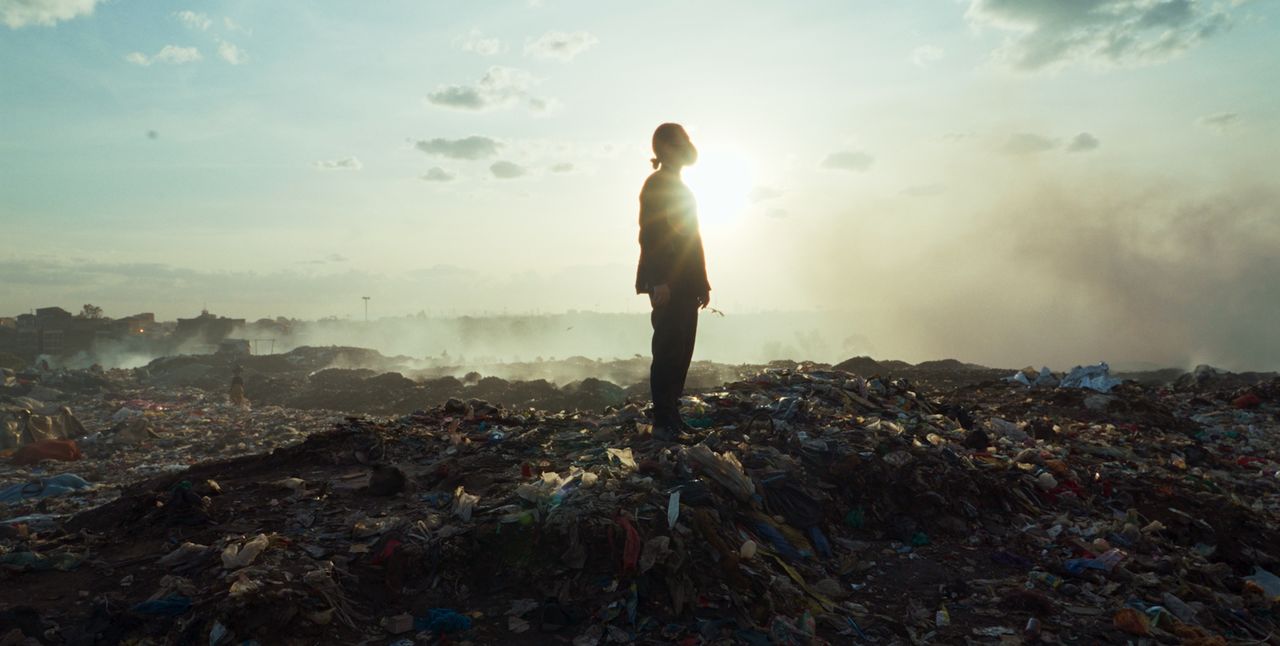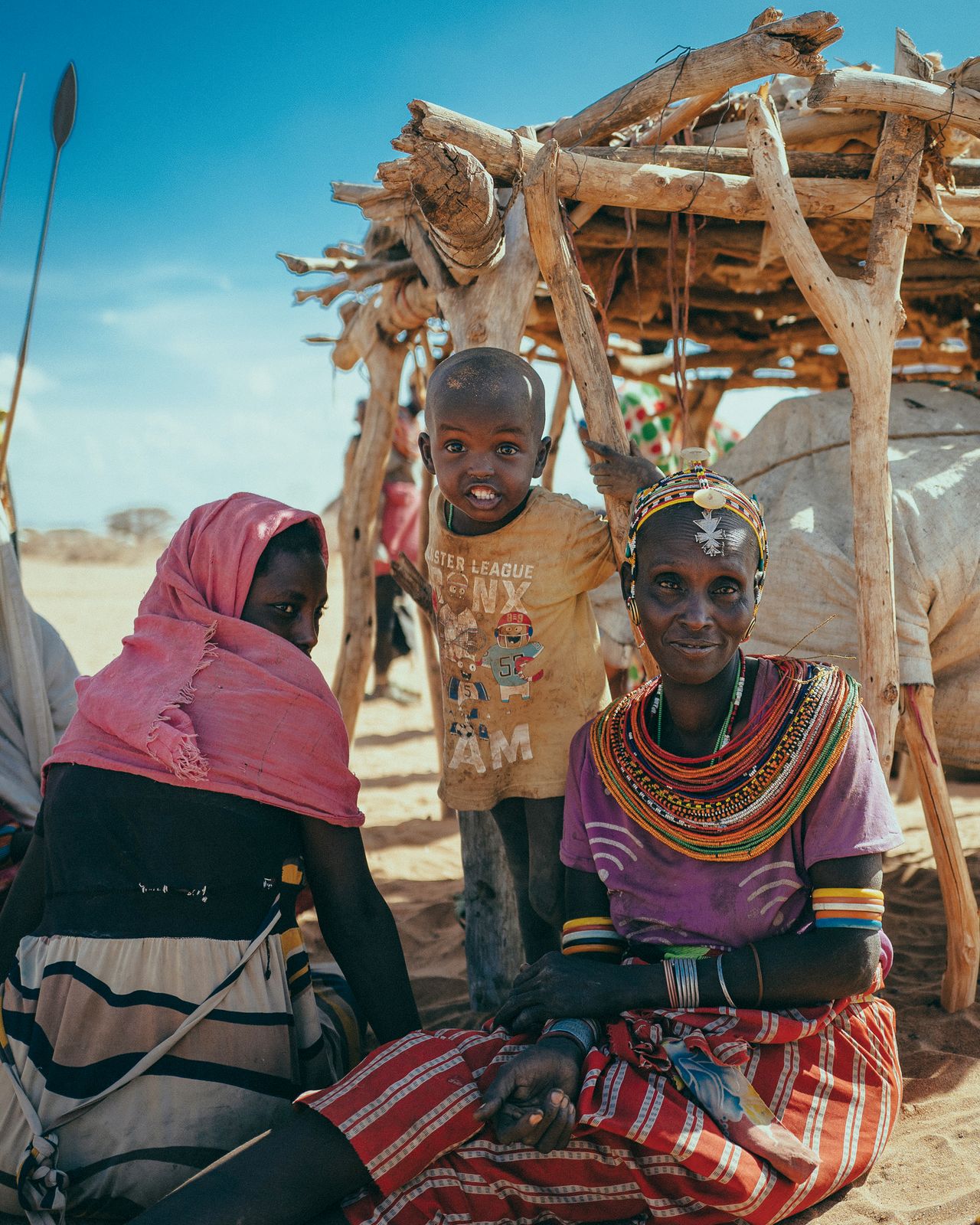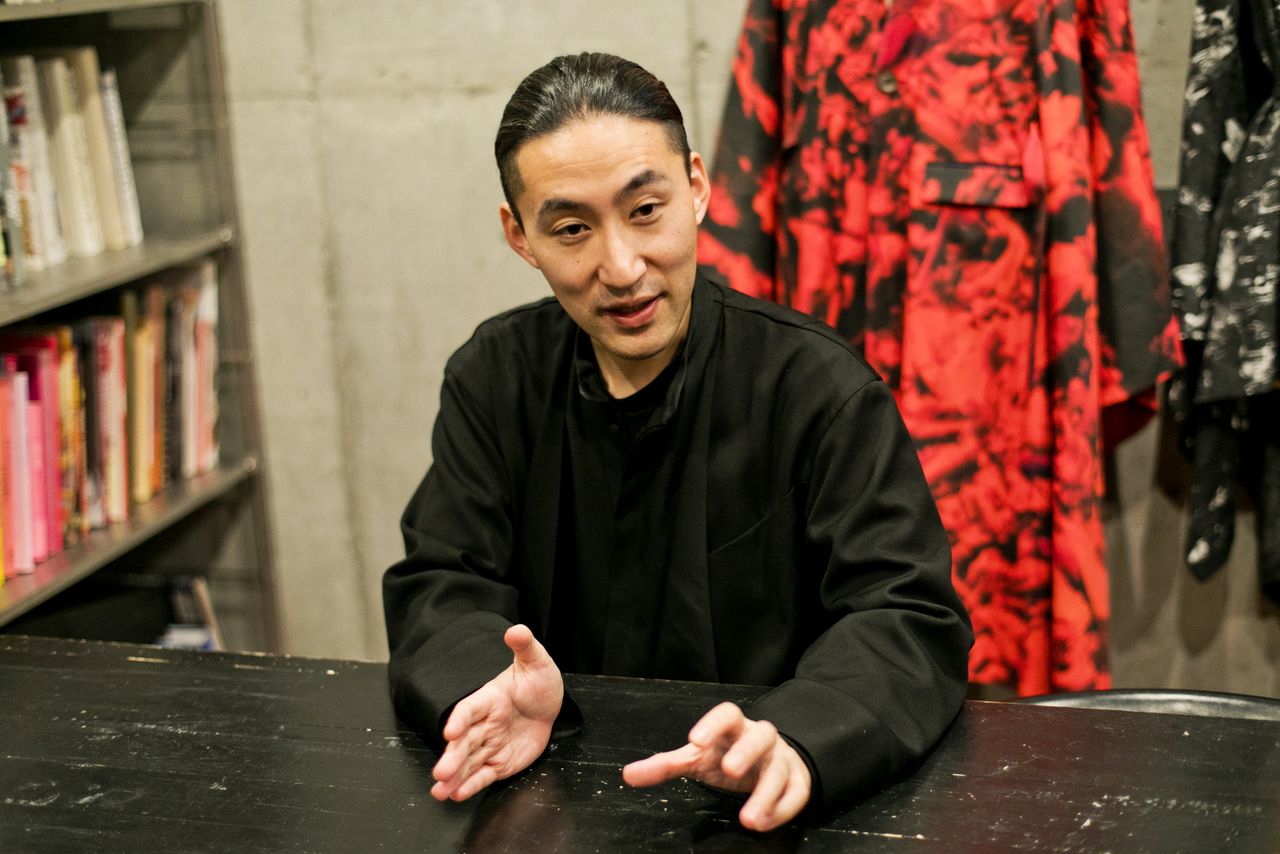A documentary film follows Japanese fashion designer Nakazato Yuima as he prepares for the prestigious Paris Haute Couture Collection. Traveling to Nairobi, he comes face to face with the wastefulness of the fashion industry, spurring him to make radical changes in his work for the sake of the future of clothing.
Looking Good Comes at a Cost
The fashion industry has a huge environmental footprint. Textiles consume massive amounts of water, spew carbon dioxide into the atmosphere, and produce large quantities of industrial waste. Moreover, a heavy reliance on synthetic materials contaminates ecosystems with microfibers, released when clothing is washed. According to the UN Conference on Trade and Development, the fashion sector’s ecological impact is second only to the oil industry.
The developing world bears much of the brunt of fashion’s wasteful practices, with advanced economies offloading used and surplus clothing to poor countries in South America, Africa, and elsewhere. Kenya’s capital of Nairobi is a notorious example as the home of the world’s largest second-hand clothing market and a sprawling textile graveyard.
The 2023 documentary film Moeru doresu o tsumuide (Dust to Dust) lays bare fashion’s dirty secret through an unlikely champion for change, leading Japanese fashion designer Nakazato Yuima. Directed by Sekine Kōsai, the movie follows Nakazato from Nairobi to Tokyo to Paris as he prepares for the Paris Haute Couture show and wrestles with the future of fashion.
Much of the clothing advanced nations discard end up in Kenyan landfills. (© Generation 11)
An Insider Looks for Ways to Make a Change
Nakazato says that his interest in environmental issues is an outgrowth of a childhood understanding that humanity must live in harmony with nature. However, as someone who makes his livelihood in fashion, he says that he was slow to acknowledge the pressing need to shift textiles to a sustainable model based on the life cycle of clothing. “The issue had been eating at me,” he admits. “But the years went by without my knowing what to do about it.”
Nakazato launched his brand Yuima Nakazato in 2009 at the age of 24. Rising to prominence in the industry, he debuted at the prestigious Paris Haute Couture Collection in 2016, the same year that the landmark Paris Agreement, signed the previous December, came into force. The agreement sparked a shift in the global mindset toward climate change, including in the fashion industry, which started to acknowledge the scale of its environmental impact.
It was around this time that Nakazato says he began to forge a clearer idea of the approach he wanted to take. “Many people from my generation got behind the environmental movement,” Nakazato recounts. “They pushed for the adoption of new technologies and built networks of likeminded individuals in an attempt to change the industry. Collaborating with people from this group, I started to feel that we could make a real difference.”
Inspired to action, Nakazato visited recycling centers and other waste disposal facilities to learn how clothes are disposed of and to get a better idea of materials and designs that were hard to recycle. He then applied what he learned to his own design process. The idea for the documentary film grew out of these efforts, coming about during a discussion with director Sekine Kōsai regarding landfills in Kenya filling up with the world’s unwanted clothing. Nakazato and Sekine had collaborated on earlier projects, and together they drew up plans for visiting the site and documenting the experience.
Mountains of Castoffs
In 2022, Nakazato paused his preparations for Paris to travel to Kenya, touching down in Nairobi with a film crew in October. With cameras rolling, he navigates his way through the streets and passages of the massive Gikomba Market, the world’s largest hub for second-hand clothes. There he found transport containers filled with 40- to 50-kilogram bundles of clothing shipped from all corners of the globe. The movie shows vendors at the market sifting through the contents, pulling out usable and mendable items to resell and tossing aside whatever is deemed unsalvageable. This mass of unwanted textiles is sent to the nearby landfill.

Nakazato weaves his way through the sprawling Gikomba Market. (© Generation 11)
The film then follows Nakazato to one of the city’s dumps teeming with discarded textiles. The apocalyptic scene is punctuated by flocks of large, vulture-like birds scavenging among the smoldering mounds of clothing. Nakazato had come to Kenya fully aware of what he would find. But no amount of research could have prepared him for the reality of the situation. With the camera trained on him, he stares across the site, shocked and dumbstruck by the desolate scene and overpowering stench.
Looking back, Nakazato says the experience affected him more deeply than he ever imagined. “It was all so overwhelming,” he explains “I didn’t know how to express what I was feeling. I just knew I couldn’t ignore it.” With only two months to go until the Paris Haute Couture Collection, Nakazato decided to scrap his previous designs and started over, trying to express the emotions stirred by his trip to Gikomba.
Sekine in his documentary provides viewers an intimate view of Nakazato as he struggles through the creative process. “Having the camera focused on me constantly and the director prodding my inner thoughts was tough,” Nakazato says affably of the filming. “It was a unique experience.”

Nakazato stares numbly at the smoking mounds of unwanted clothes. (© Generation 11)
Ray of Hope
While in Kenya, Nakazato also visited the arid, drought-wracked region of Marsabit in the north of the country. He says that it was there, mingling with the desert inhabitants amid the looming threat of famine, that the first inklings of how to confront the profligate habits of the fashion industry came to him.
“I’m fascinated by the simple way of life of pastoralist,” Nakazato explains. “Most of their needs—food, clothing, materials—are provided by their livestock. It’s an efficient, compact circle of dependence. Knowing there are people on the planet who live in this manner changed my perspective.”

Women display colorful traditional beads in Kenya’s northern Marsabit region. (© Generation 11)
In the film, Nakazato wanders through a tribal village, his eyes started glinting at the primitive sheepskin garments and colorful beaded adornments he comes across. Speaking about the scene, Nakazato declares, “I had been exploring the origin of clothing for a long time, so it was moving to finally come face to face with such primitive forms of fashion. The dumpsite had filled me with despair, but seeing how women, even in such a harsh region, adorned themselves with vibrantly colored accessories was affirming and gave me the courage to create. It felt like I had discovered part of the essence of fashion design.”
Integrating Technique, Materials, and Design
In the first third of documentary, Sekine shows Nakazato struggling with what he finds in Kenya. The remaining time portrays how he confronts that reality in his work. Returning to Japan with 150 kilograms of second-hand textiles procured at the Gikomba Market, Nakazato sets to work turning the used garments into inspiring fashion.
The designer takes a new approach, turning to new technology developed by a printing company to revitalize the used textiles. He also incorporates in his designs environmentally friendly fabrics made with synthetic proteins created by a venture firm based in Yamagata Prefecture.
Nakazato says that the Paris Couture is fashion’s proving grounds. “The techniques developed there give an indication of where the industry will be a decade down the road,” he explains. “Designers showing their collections are charged with setting trends that will span the globe, which makes it all the more important that they be certain of the message they want to convey to the world.”

Nakazato works on his collection in Tokyo. (© Generation 11)
With this in mind, Nakazato gets to work, focusing his creative energy on integrating materials and technology. The final part of the documentary consists of scene after scene of the designer striving to bring his vision to reality. The camera captures tense moments and mishaps as the clock ticks down to Paris.
“It’s always hardest right before a show,” Nakazato admits. “What sees me through is my firm belief in the power of fashion.” He views the Paris Collection as a place where great designers try to change the world through fashion. “When the values of society change, clothing is one of the first things to cross over. Denim, for instance, started out as workwear, but today it is loved by people of all genders, classes, occupations, and nationalities. It’s the designer’s job to breathe life into new ideas and trends.”

Scenes from Nakazato’s exhibit of his spring/summer collection at the Paris Haute Couture in January 2023. (© Generation 11)
In designing his collection, Nakazato wanted to avoid having his message of environmental awareness come across as mere theater, a point the film makes no judgement on. Illustrating his sincerity, though, Nakazato remains intent on sharing his vision. “A piece of clothing is completed only when someone puts it on,” he says. “I want the movie to make people think, even just a little bit, about the lifecycle of what they wear every day. If I succeed in this, I will be happy.”
(Originally published in Japanese. Interview and text by Matsumoto Takuya of Nippon.com. Interview photos by Igarashi Kazuharu. Banner photo © Generation 11)
Moeru doresu o tsumuide (Dust to Dust) (2023)
Trailer





